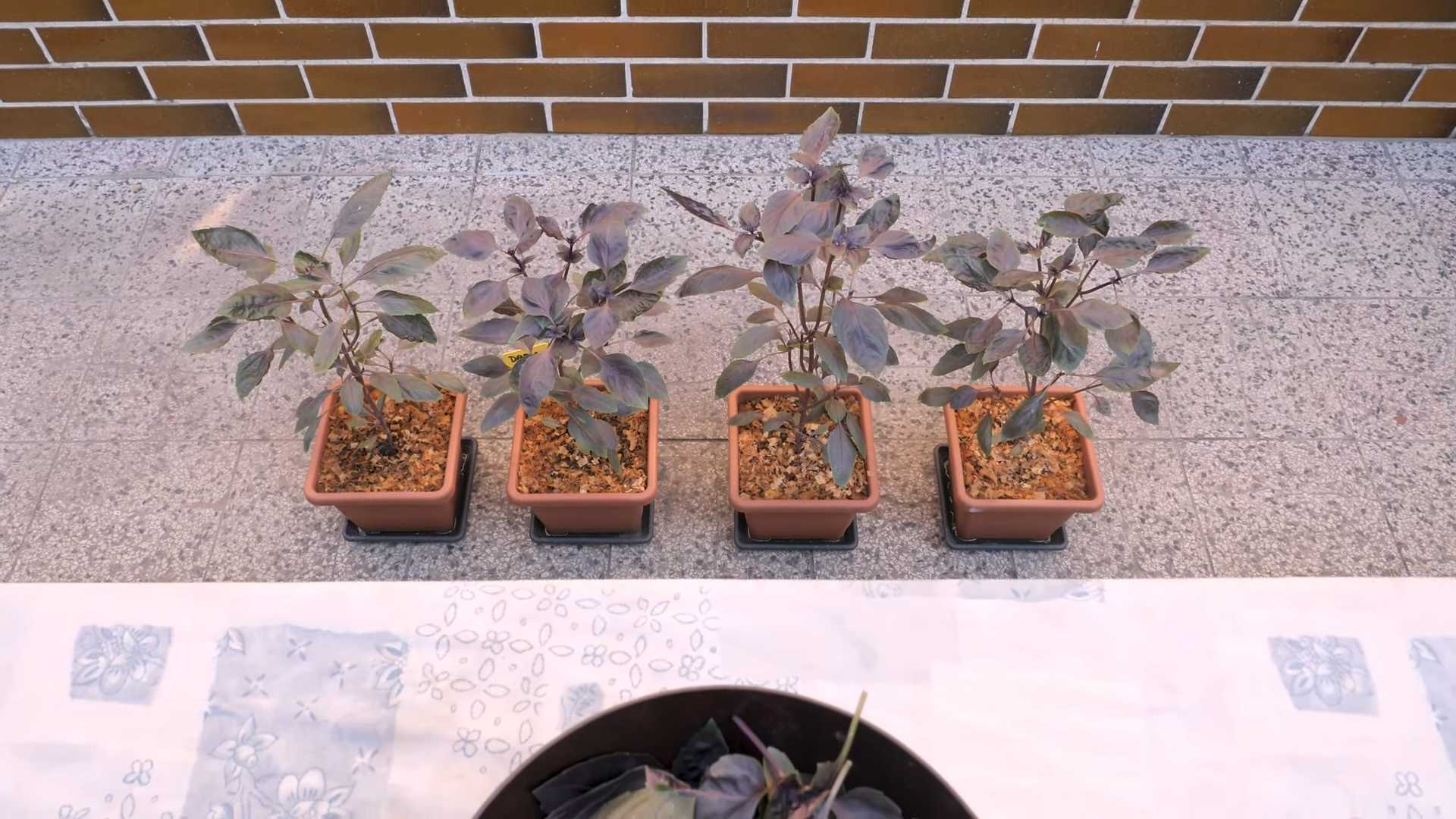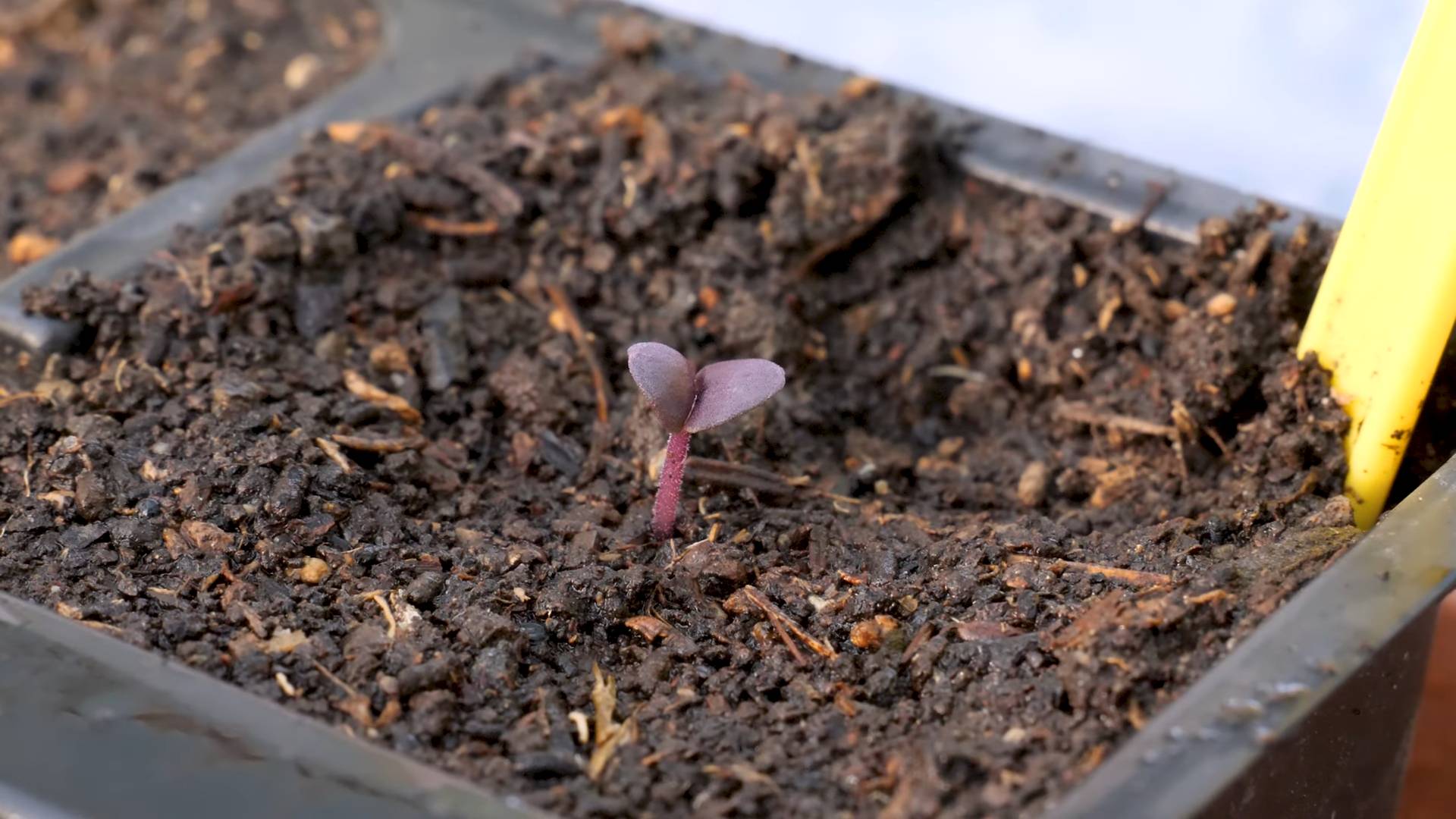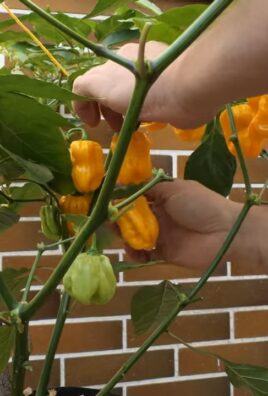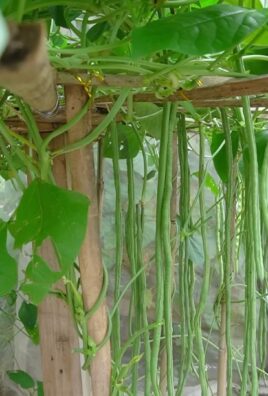Grow Purple Basil Containers: Unleash your inner gardener and transform your patio, balcony, or even a sunny windowsill into a vibrant, aromatic oasis! Have you ever dreamed of snipping fresh, fragrant basil leaves right outside your door, ready to elevate your culinary creations? Well, dream no more! This DIY guide will empower you to cultivate stunning purple basil containers, adding a touch of elegance and flavor to your life.
Basil, a herb revered for centuries, boasts a rich history deeply intertwined with various cultures. From ancient medicinal practices to symbolic representations of love and prosperity, basil has always held a special place in human history. Now, you can continue this legacy by nurturing your own purple basil plants.
Why purple basil, you ask? Beyond its captivating color, purple basil offers a unique flavor profile, often described as slightly spicier and more robust than its green counterpart. Plus, let’s be honest, it’s simply gorgeous! In today’s fast-paced world, taking a moment to connect with nature can be incredibly therapeutic. Growing your own herbs, especially in containers, is a fantastic way to de-stress, learn a new skill, and enjoy the satisfaction of harvesting your own fresh ingredients. This DIY guide will provide you with all the essential tips and tricks to successfully grow purple basil containers, even if you’re a complete beginner. I’m excited to share my knowledge and help you create a thriving, beautiful garden space!

Growing Vibrant Purple Basil in Containers: A DIY Guide
Hey there, fellow plant enthusiasts! I’m so excited to share my secrets for growing gorgeous, fragrant purple basil in containers. It’s easier than you might think, and the results are absolutely stunning. Not only does purple basil add a pop of color to your garden or balcony, but it also brings a unique flavor to your culinary creations. Let’s dive in!
Why Grow Purple Basil in Containers?
Before we get started, let’s talk about why container gardening is perfect for purple basil:
* Control: You have complete control over the soil, watering, and sunlight your basil receives. This is crucial for healthy growth.
* Portability: You can easily move your containers to chase the sun or protect them from harsh weather.
* Space-Saving: Containers are ideal for small spaces like balconies, patios, or even windowsills.
* Aesthetics: Purple basil looks absolutely stunning in decorative pots, adding a touch of elegance to your outdoor (or indoor!) space.
* Pest Control: Containers can help minimize pest problems, as you can easily monitor and treat your plants.
What You’ll Need
Here’s a list of everything you’ll need to embark on your purple basil growing adventure:
* Purple Basil Seeds or Seedlings: You can start from seeds or purchase seedlings from a local nursery. I personally prefer starting from seeds, as it’s more rewarding and cost-effective.
* Container: Choose a container that’s at least 12 inches in diameter and 12 inches deep. Make sure it has drainage holes!
* Potting Mix: Use a high-quality potting mix specifically formulated for containers. Avoid using garden soil, as it can compact and hinder drainage.
* Watering Can or Hose: For regular watering.
* Fertilizer: A balanced, water-soluble fertilizer or organic fertilizer.
* Optional:
* Plant labels: To keep track of your basil varieties.
* Gardening gloves: To protect your hands.
* Small trowel or hand shovel: For planting.
* Mulch: To help retain moisture and suppress weeds.
* Grow lights: If you’re growing indoors and don’t have enough natural light.
Choosing the Right Container
The container you choose plays a vital role in the success of your purple basil. Here’s what to consider:
* Size: As mentioned earlier, aim for a container that’s at least 12 inches in diameter and 12 inches deep. This will provide enough room for the roots to grow and thrive.
* Material: Containers come in various materials, including plastic, terracotta, ceramic, and wood. Each has its pros and cons.
* Plastic: Lightweight, inexpensive, and retains moisture well. However, it can heat up quickly in direct sunlight.
* Terracotta: Porous, allowing for good air circulation and drainage. However, it dries out faster than plastic and can be heavy.
* Ceramic: Attractive and durable, but can be expensive and heavy.
* Wood: Natural and aesthetically pleasing, but can rot over time.
* Drainage: This is non-negotiable! Ensure your container has adequate drainage holes to prevent waterlogging, which can lead to root rot.
Preparing the Soil
Purple basil thrives in well-draining, nutrient-rich soil. Here’s how to prepare the perfect potting mix:
* Choose a high-quality potting mix: Look for a mix that contains ingredients like peat moss, perlite, and vermiculite. These ingredients help with drainage, aeration, and moisture retention.
* Amend the soil (optional): If you want to give your basil an extra boost, you can amend the potting mix with compost or aged manure. This will add nutrients and improve soil structure.
* Avoid garden soil: Garden soil is too heavy and compact for containers. It doesn’t drain well and can suffocate the roots.
Planting Your Purple Basil
Now for the fun part – planting your purple basil!
Starting from Seeds
1. Sow the seeds: Fill your container with potting mix, leaving about an inch of space at the top. Sprinkle the basil seeds evenly over the surface of the soil.
2. Cover the seeds: Gently cover the seeds with a thin layer of potting mix (about 1/4 inch).
3. Water gently: Use a watering can or spray bottle to moisten the soil. Be careful not to dislodge the seeds.
4. Provide warmth and light: Place the container in a warm, sunny location or under grow lights. Basil seeds need warmth and light to germinate.
5. Keep the soil moist: Water regularly to keep the soil consistently moist, but not soggy.
6. Thin the seedlings: Once the seedlings emerge and have a few sets of true leaves, thin them out, leaving the strongest seedlings spaced about 6-8 inches apart.
Planting Seedlings
1. Prepare the container: Fill your container with potting mix, leaving about an inch of space at the top.
2. Dig a hole: Dig a hole in the soil that’s slightly larger than the root ball of the seedling.
3. Remove the seedling from its container: Gently remove the seedling from its container, being careful not to damage the roots.
4. Place the seedling in the hole: Place the seedling in the hole and gently spread out the roots.
5. Fill the hole: Fill the hole with potting mix and gently firm the soil around the base of the plant.
6. Water thoroughly: Water the seedling thoroughly to help it settle in.
Caring for Your Purple Basil
Proper care is essential for healthy, vibrant purple basil. Here’s what you need to know:
Sunlight
Purple basil needs at least 6-8 hours of sunlight per day. If you’re growing it indoors, place it near a sunny window or use grow lights. Insufficient sunlight can result in leggy growth and pale leaves.
Watering
Water your purple basil regularly, especially during hot, dry weather. The soil should be consistently moist, but not soggy. Overwatering can lead to root rot. Check the soil moisture by sticking your finger into the soil. If the top inch feels dry, it’s time to water.
Fertilizing
Feed your purple basil every 2-4 weeks with a balanced, water-soluble fertilizer or organic fertilizer. Follow the instructions on the fertilizer package. Fertilizing will help promote healthy growth and vibrant purple foliage.
Pruning
Pruning is crucial for encouraging bushy growth and preventing your basil from flowering too early. Pinch off the top sets of leaves regularly, especially when the plant is young. This will encourage the plant to branch out and produce more leaves. Also, remove any flower buds as soon as you see them. Flowering will cause the plant to stop producing leaves and can make the leaves taste bitter.
Pest and Disease Control
Purple basil is generally resistant to pests and diseases, but it can be susceptible to aphids, spider mites, and fungal diseases.
* Aphids: These tiny insects suck the sap from the leaves, causing them to curl and distort. You can control aphids by spraying them with a strong stream of water or by using insecticidal soap.
* Spider mites: These tiny pests create webs on the leaves and suck the sap. You can control spider mites by spraying them with a strong stream of water or by using miticidal soap.
* Fungal diseases: These diseases can cause spots on the leaves and can eventually kill the plant. You can prevent fungal diseases by providing good air circulation and avoiding overwatering. If you see signs of fungal disease, remove the affected leaves and spray the plant with a fungicide.
Harvesting Your Purple Basil
You can start harvesting your purple basil as soon as the plant has a few sets of true leaves. Simply pinch off the leaves as needed. Regular harvesting will encourage the plant to produce more leaves.
* Harvest in the morning: The best time to harvest basil is in the morning, after the dew has dried but before the sun gets too hot. This is when the leaves are at their most flavorful.
* Pinch off the leaves: Use your fingers or scissors to pinch off the leaves.
* Store the leaves: You can use the leaves fresh or store them in the refrigerator for a few days. To store them, wrap them in a damp paper towel and place them in a plastic bag. You can also freeze the leaves for longer storage.
Troubleshooting
Even with the best care, you might encounter some problems while growing purple basil. Here are some common issues and how to address them:
* Yellowing leaves: This can be caused by overwatering, underwatering, nutrient deficiency, or pests. Check the soil moisture, fertilize the plant, and inspect it for

Conclusion
So, there you have it! Growing purple basil in containers isn’t just a gardening project; it’s an invitation to elevate your culinary creations and add a touch of vibrant beauty to your living space. We’ve explored the simple steps, from selecting the right container and soil to providing the perfect amount of sunlight and water. But why is this DIY trick a must-try?
Firstly, the sheer convenience of having fresh, aromatic purple basil at your fingertips is unparalleled. No more last-minute trips to the grocery store or settling for wilted, lackluster herbs. Imagine stepping onto your balcony or into your garden and snipping a few leaves to infuse your pasta sauce, salad, or even a refreshing cocktail with an intense, slightly spicy flavor.
Secondly, growing your own purple basil allows you to control the quality and freshness of your herbs. You know exactly what’s going into your plants – no harmful pesticides or chemicals. This is especially important for those who are conscious about their health and the environment.
Thirdly, the aesthetic appeal of purple basil is undeniable. Its deep, rich color adds a striking contrast to the greenery in your garden or on your patio. It’s a conversation starter, a visual delight, and a testament to your green thumb.
But the benefits don’t stop there. Growing purple basil can be incredibly therapeutic. The simple act of nurturing a plant, watching it grow, and harvesting its bounty can be incredibly rewarding and stress-relieving. It’s a connection to nature that can be especially valuable in our increasingly urbanized world.
Now, let’s talk about variations. While we’ve focused on the basics, there are plenty of ways to customize your purple basil growing experience. Consider experimenting with different container sizes and materials. Terracotta pots are classic and allow for good drainage, while plastic containers are lightweight and retain moisture well. You could even try upcycling old buckets or containers for a more sustainable approach.
Another variation is to try different varieties of purple basil. ‘Dark Opal’ is a popular choice for its deep purple color and strong flavor, while ‘Purple Ruffles’ offers a more frilly and ornamental appearance. Experiment with different varieties to find the one that best suits your taste and aesthetic preferences.
You can also companion plant your purple basil with other herbs and vegetables. Tomatoes, peppers, and oregano are all excellent companions for basil, as they help to deter pests and improve growth.
Ultimately, the best way to learn is by doing. So, we encourage you to give this DIY trick a try. Don’t be afraid to experiment, make mistakes, and learn from your experiences. And most importantly, share your journey with us! We’d love to hear about your successes, challenges, and any tips or tricks you’ve discovered along the way. Post photos of your purple basil containers on social media using [Your Hashtag Here], and let’s create a community of purple basil enthusiasts!
Growing purple basil is a rewarding experience that combines culinary delight with aesthetic beauty. So, grab your seeds, soil, and containers, and get ready to embark on a flavorful and visually stunning adventure. Happy gardening!
Frequently Asked Questions (FAQ)
What is the best time of year to start growing purple basil in containers?
The best time to start growing purple basil in containers is in the late spring or early summer, after the last frost has passed. Purple basil is a warm-weather herb that thrives in temperatures between 60°F and 80°F (15°C and 27°C). Starting your seeds indoors 6-8 weeks before the last frost can give you a head start. If you live in a region with a long growing season, you can also direct sow the seeds into your containers once the soil has warmed up.
How much sunlight does purple basil need?
Purple basil requires at least 6-8 hours of direct sunlight per day to thrive. Choose a location for your containers that receives plenty of sunlight throughout the day. If you’re growing your basil indoors, place it near a sunny window or use grow lights to supplement natural light. Insufficient sunlight can result in leggy growth and a less vibrant purple color.
What type of soil is best for growing purple basil in containers?
Purple basil prefers well-draining soil that is rich in organic matter. A good potting mix for containers should consist of a blend of peat moss, perlite, and vermiculite. You can also amend your potting mix with compost or aged manure to provide additional nutrients. Avoid using garden soil in containers, as it can become compacted and poorly drained.
How often should I water my purple basil plants?
Water your purple basil plants regularly, keeping the soil consistently moist but not waterlogged. Check the soil moisture by sticking your finger into the soil. If the top inch feels dry, it’s time to water. Water deeply, allowing the water to drain out of the bottom of the container. Avoid overhead watering, as this can lead to fungal diseases. During hot, dry weather, you may need to water your basil plants more frequently.
How do I fertilize my purple basil plants?
Purple basil benefits from regular fertilization, especially during the growing season. Use a balanced liquid fertilizer, such as a 10-10-10 or 20-20-20 formula, diluted to half strength. Fertilize your plants every 2-3 weeks, following the instructions on the fertilizer label. Avoid over-fertilizing, as this can lead to excessive foliage growth and a less intense flavor.
How do I harvest purple basil?
Harvest purple basil leaves regularly to encourage bushier growth. Pinch off the top leaves of the plant, just above a set of leaves. This will encourage the plant to branch out and produce more leaves. You can also harvest entire stems of basil, cutting them back to a node. Avoid harvesting more than one-third of the plant at a time.
How do I prevent pests and diseases from affecting my purple basil plants?
Purple basil is generally resistant to pests and diseases, but it can be susceptible to aphids, spider mites, and fungal diseases. To prevent pests, inspect your plants regularly and remove any pests by hand or with a strong spray of water. You can also use insecticidal soap or neem oil to control pests. To prevent fungal diseases, avoid overhead watering and ensure good air circulation around your plants. If you notice any signs of disease, remove the affected leaves immediately.
Can I grow purple basil indoors?
Yes, you can grow purple basil indoors, provided you give it enough sunlight. Place your container near a sunny window that receives at least 6-8 hours of direct sunlight per day. If you don’t have enough natural light, you can use grow lights to supplement the sunlight. Indoor basil plants may require more frequent watering than outdoor plants, as the air indoors is often drier.
How do I store harvested purple basil?
There are several ways to store harvested purple basil. You can store fresh basil leaves in the refrigerator for up to a week by wrapping them in a damp paper towel and placing them in a plastic bag. You can also freeze basil leaves by blanching them in boiling water for a few seconds, then plunging them into ice water. Drain the leaves and freeze them in a single layer on a baking sheet. Once frozen, transfer the leaves to a freezer bag. Alternatively, you can dry basil leaves by hanging them upside down in a cool, dry place. Once the leaves are completely dry, store them in an airtight container.
My purple basil leaves are turning green. What’s wrong?
If your purple basil leaves are turning green, it could be due to a lack of sunlight. Purple basil needs plenty of sunlight to develop its characteristic purple color. If your plant is not receiving enough sunlight, the leaves may start to turn green. Try moving your plant to a sunnier location or supplementing with grow lights. Another possible cause is over-fertilization. Too much nitrogen can cause the leaves to turn green. Reduce the amount of fertilizer you’re using.




Leave a Comment